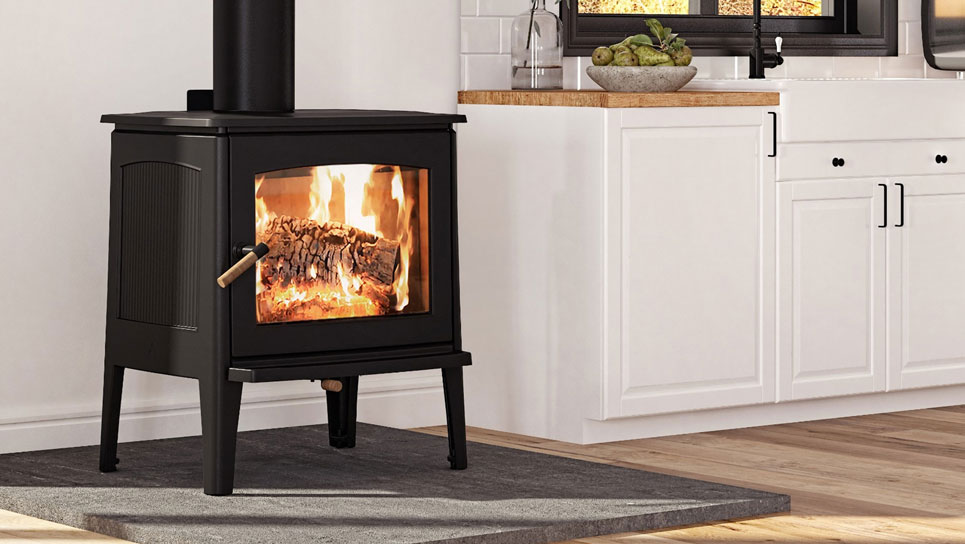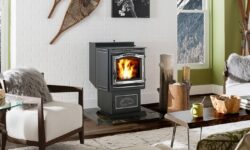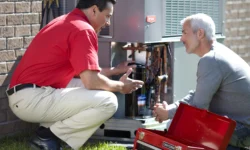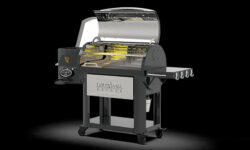Catalytic stoves use a catalytic combustor to recirculate and burn the smoke that otherwise would leave the chimney as dirty wasted fuel. Unlike older stoves, this stove is most efficient if you load it fully. The air controls will then regulate the rate of burn if you don’t want a high temperature and with a full load the catalyst is more efficient. To start the fire in a cold stove, open the loading door and open the bypass handle. Place five to ten balls of wadded newspaper covering the floor of the firebox and cover that with fifteen to twenty pieces of kindling. Lay two or three medium-sized pieces of wood on top of the kindling and light the fire.
At this point, you can leave the loading door open slightly for up to five minutes to help the fire start quickly. But never leave the stove unattended with the door open. Once the larger wood is burning in about 10 to 20 minutes, finish loading the stove with more wood and close the loading door. Take notice that the needle on the catalytic probe thermometer is starting to move toward the active zone which means the chimney is getting hot, drawing the exhaust upward and the catalyst is becoming active. Once the catalyst becomes active, close the bypass handle. The bypass handle should remain closed except during this initial startup fire in a cold stove and during reloading. If you leave the bypass handle open in subsequent firings, the flames look more active but the fuel will bypass the catalyst and as much as 50% of the heat will go directly up your chimney. Once the fire has burned for 20 to 30 minutes, you can reset the air controls to the setting you desire. Your owner’s manual will help you determine the correct setting. Watch the full video for more information on how to burn wise with a catalytic stove!










